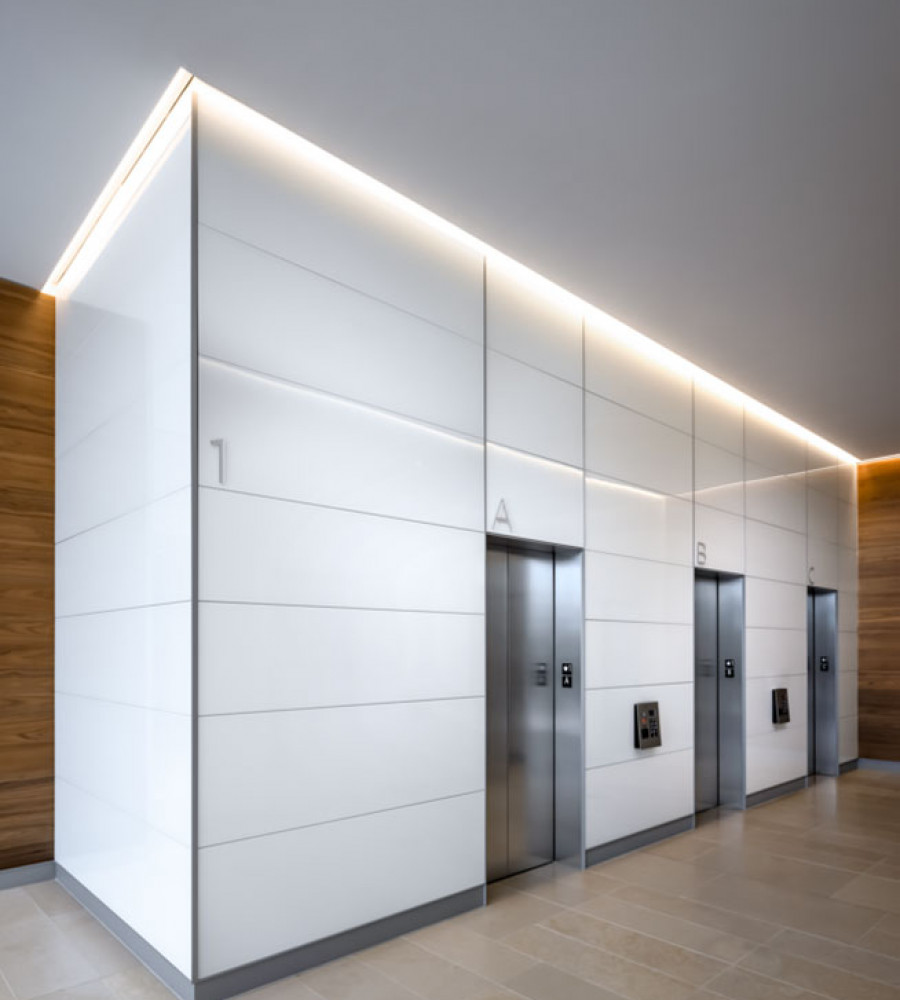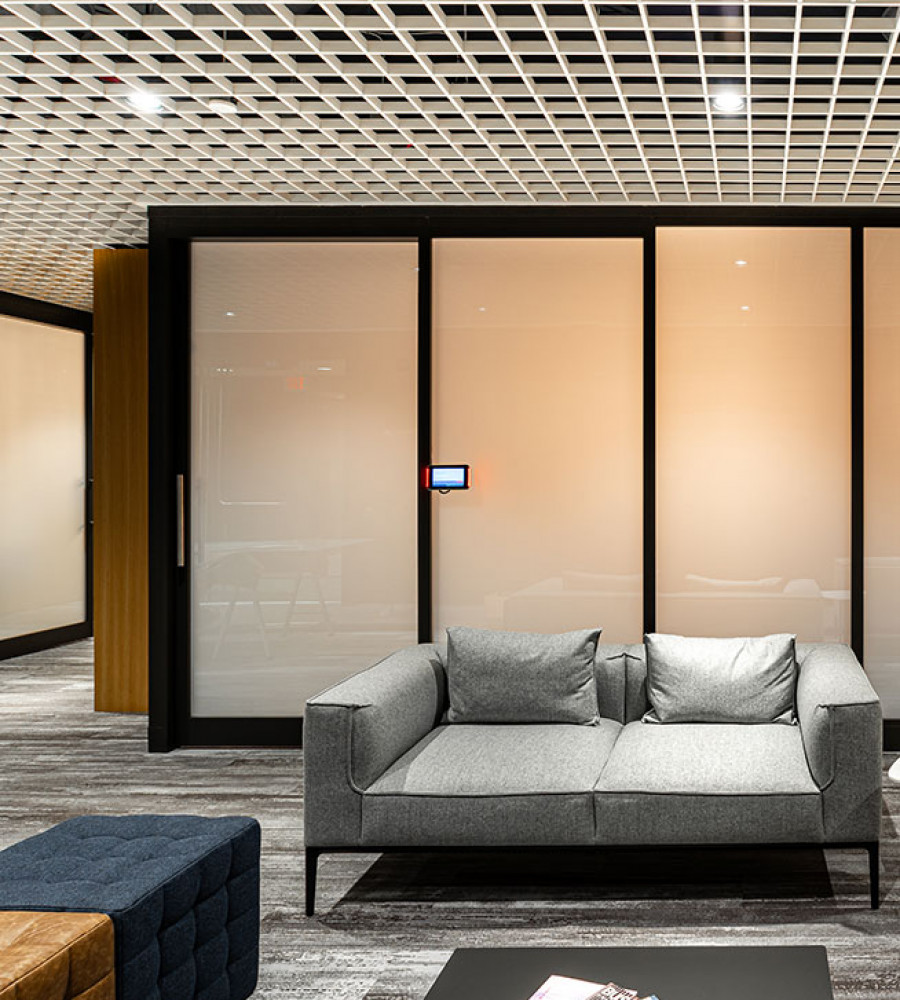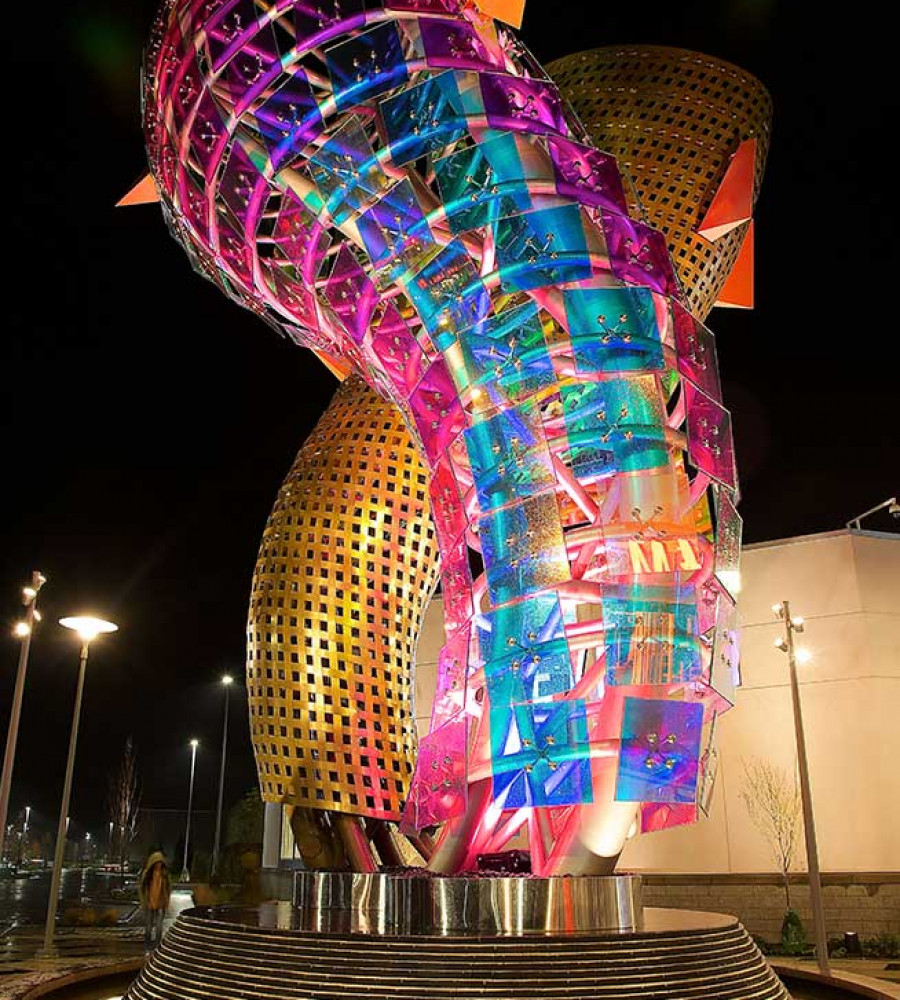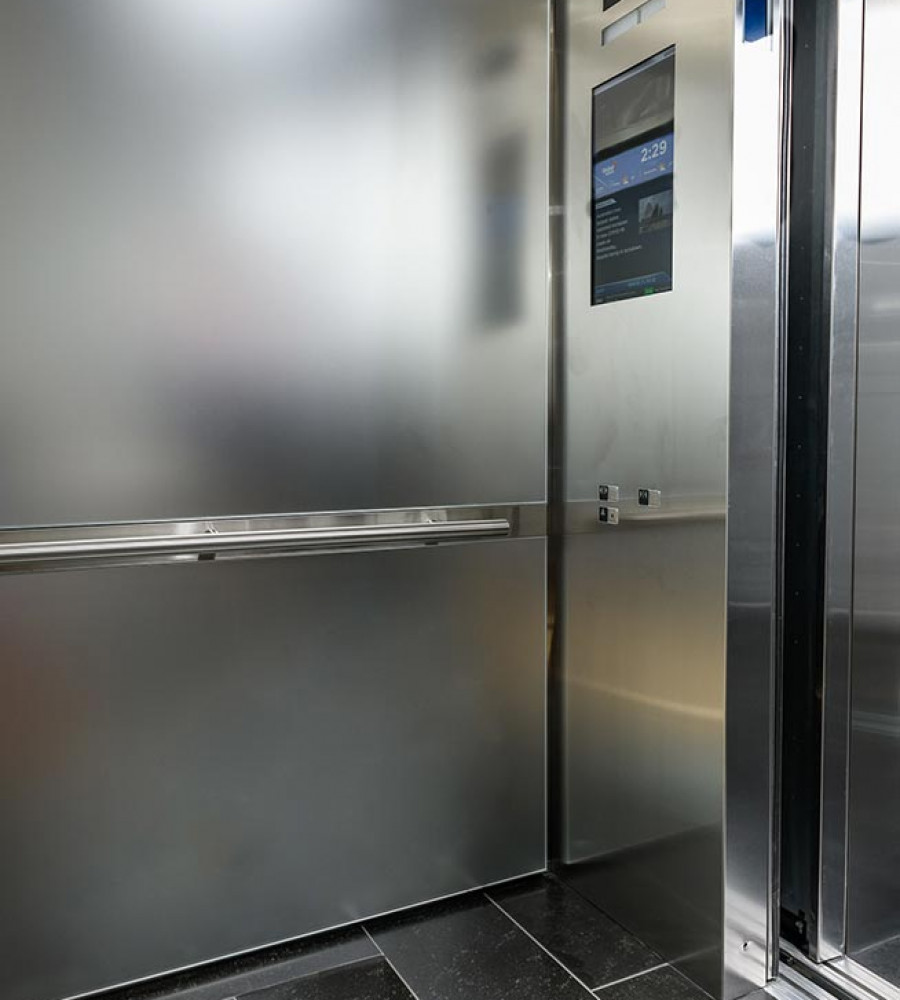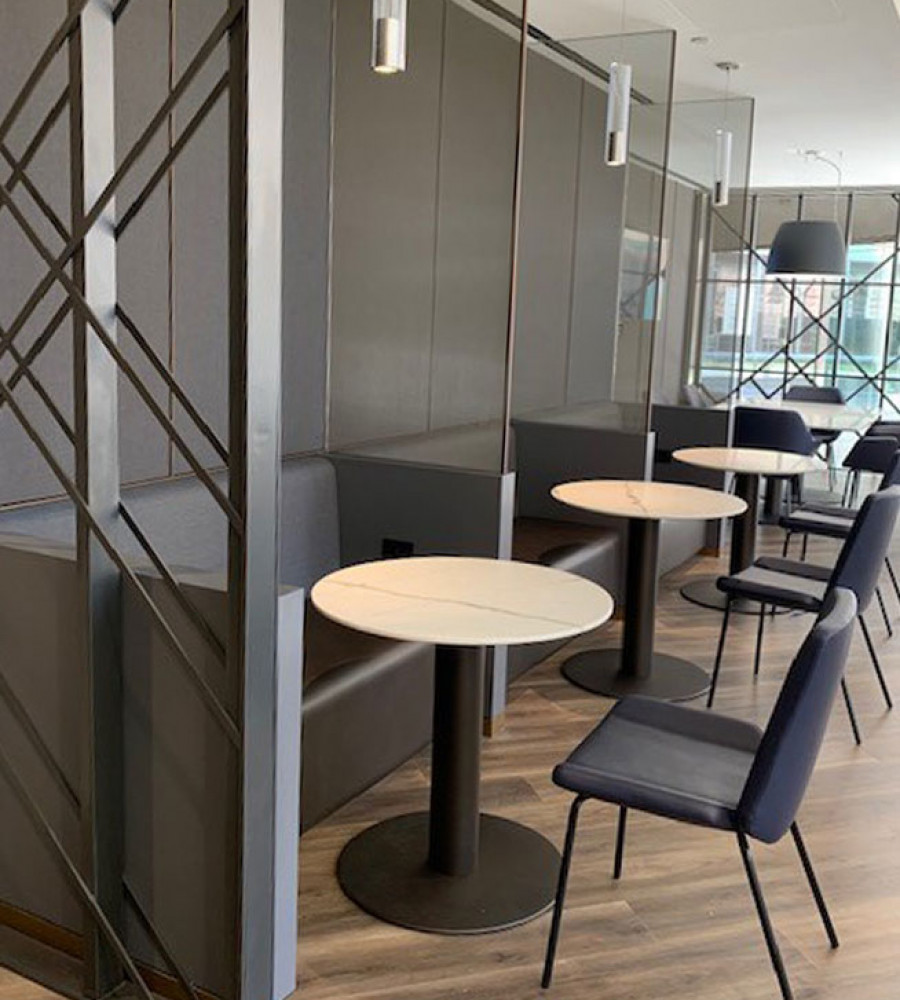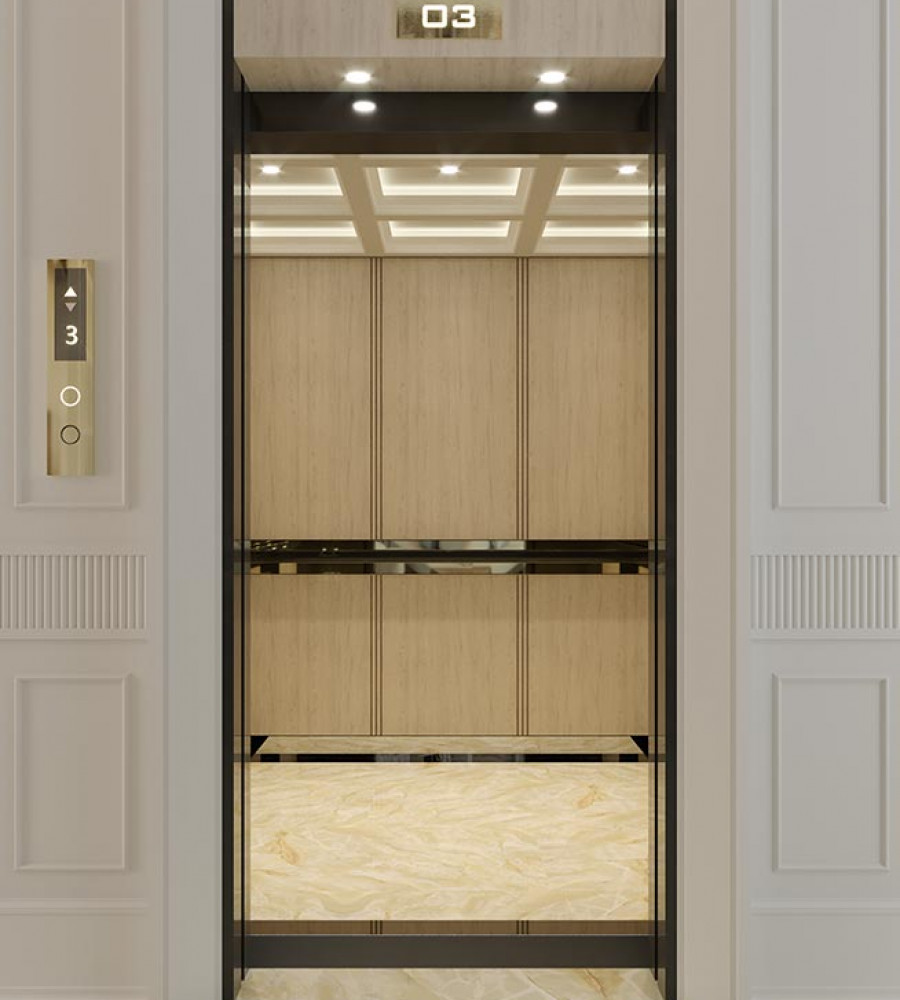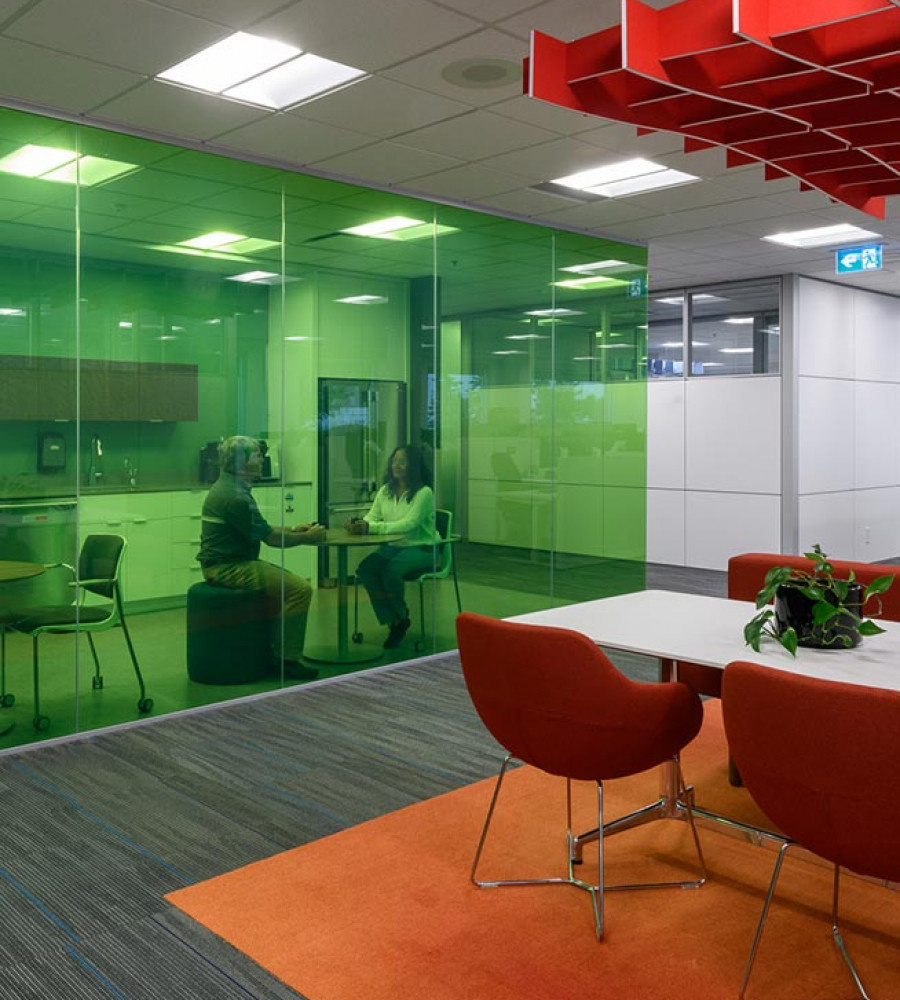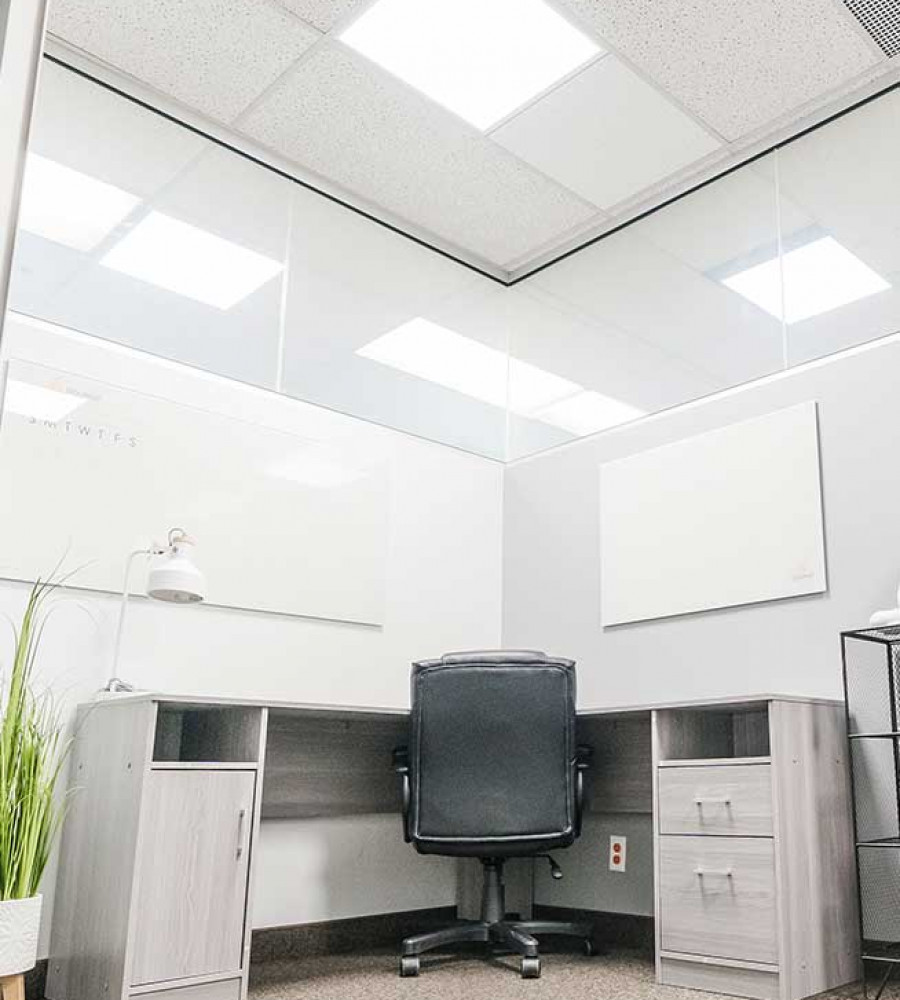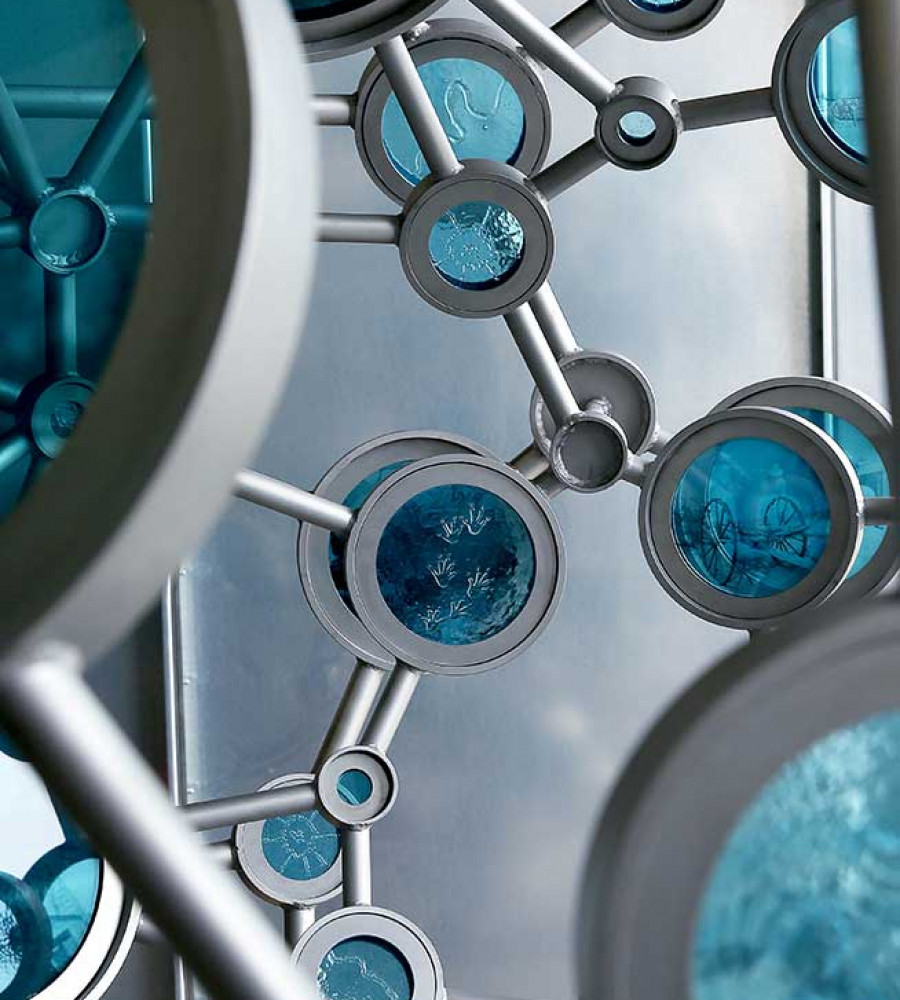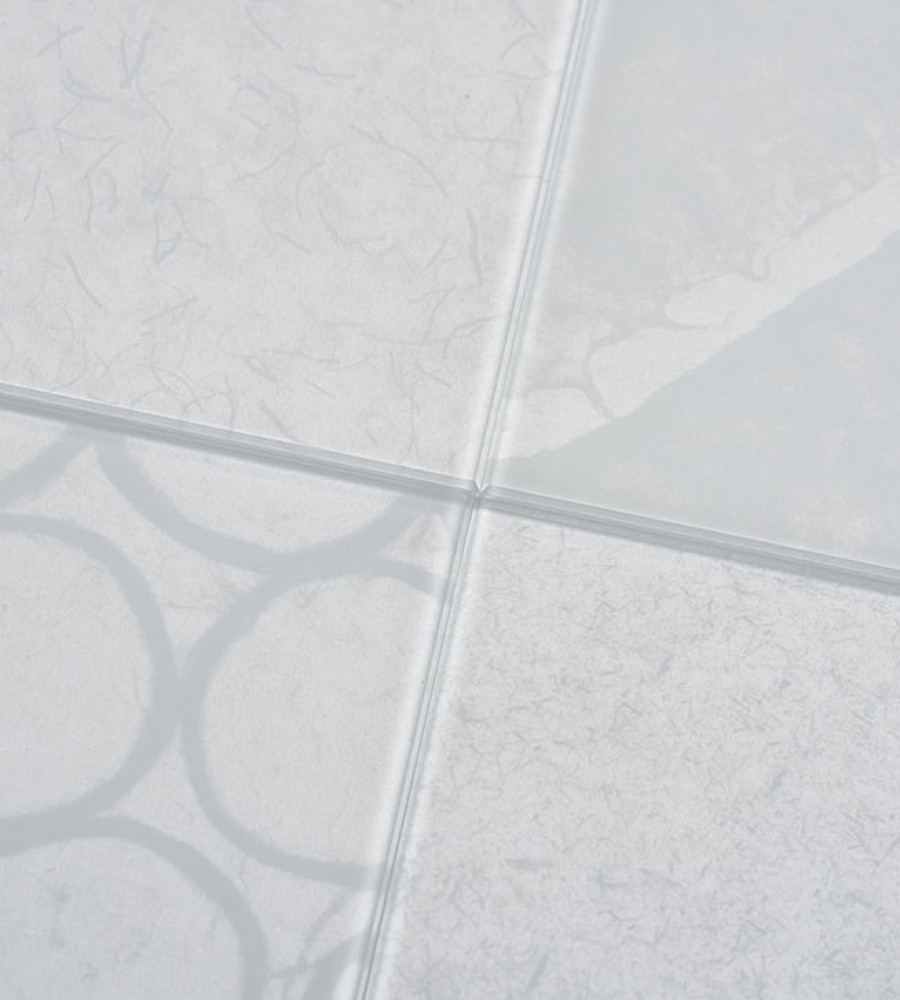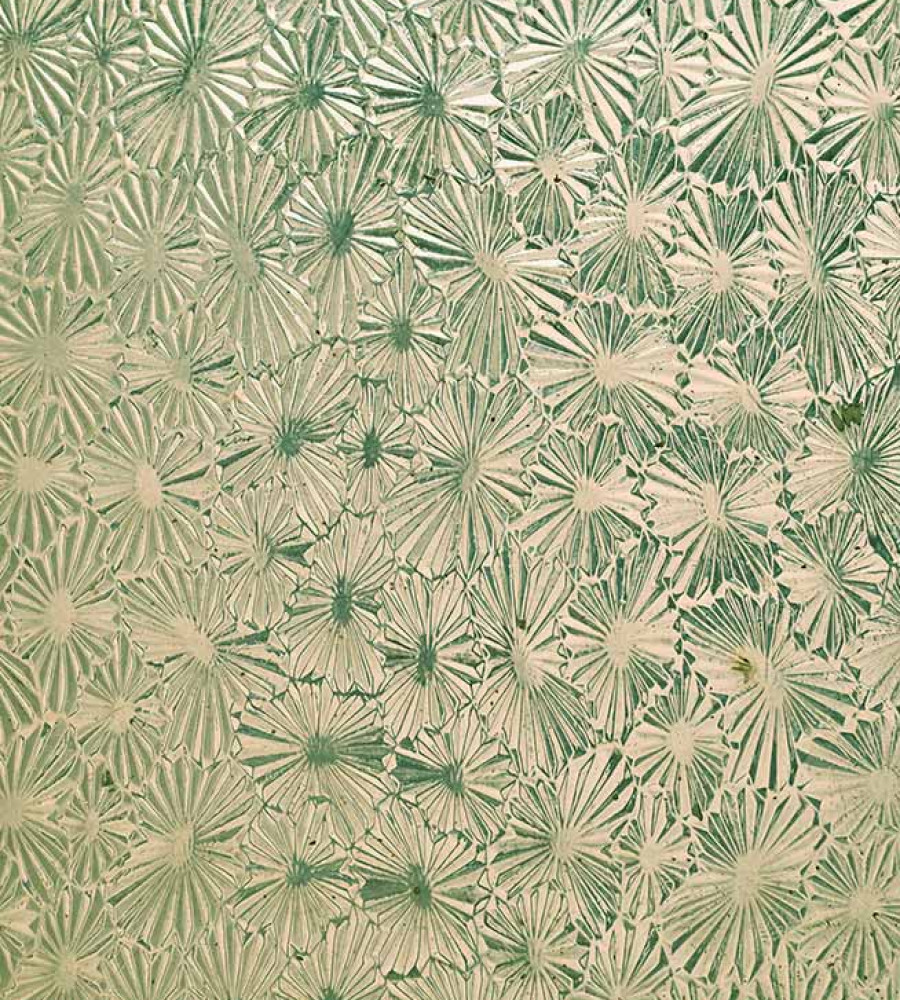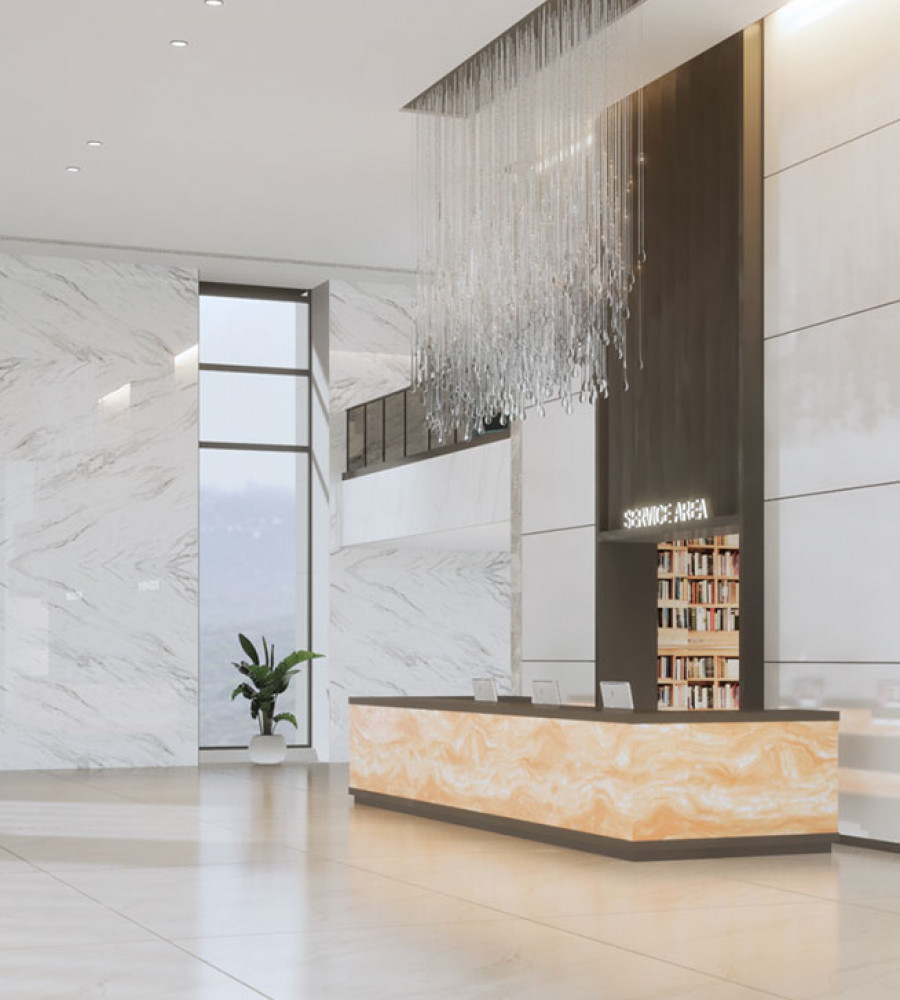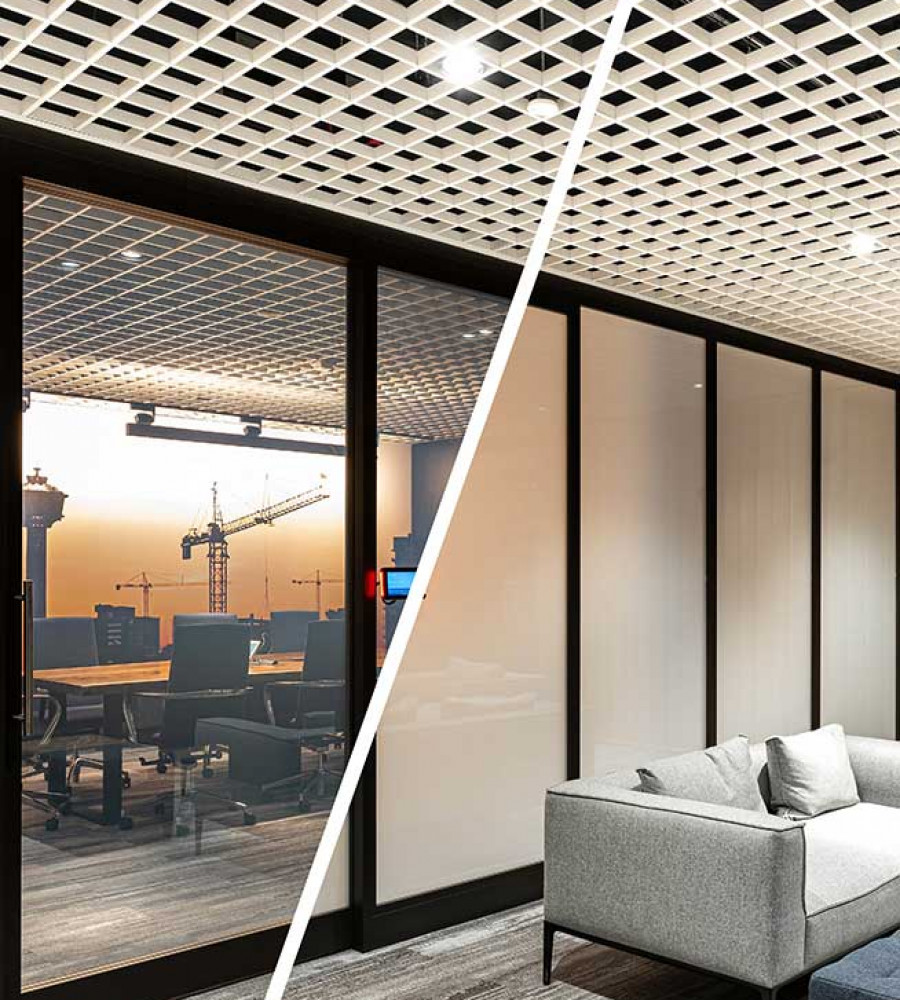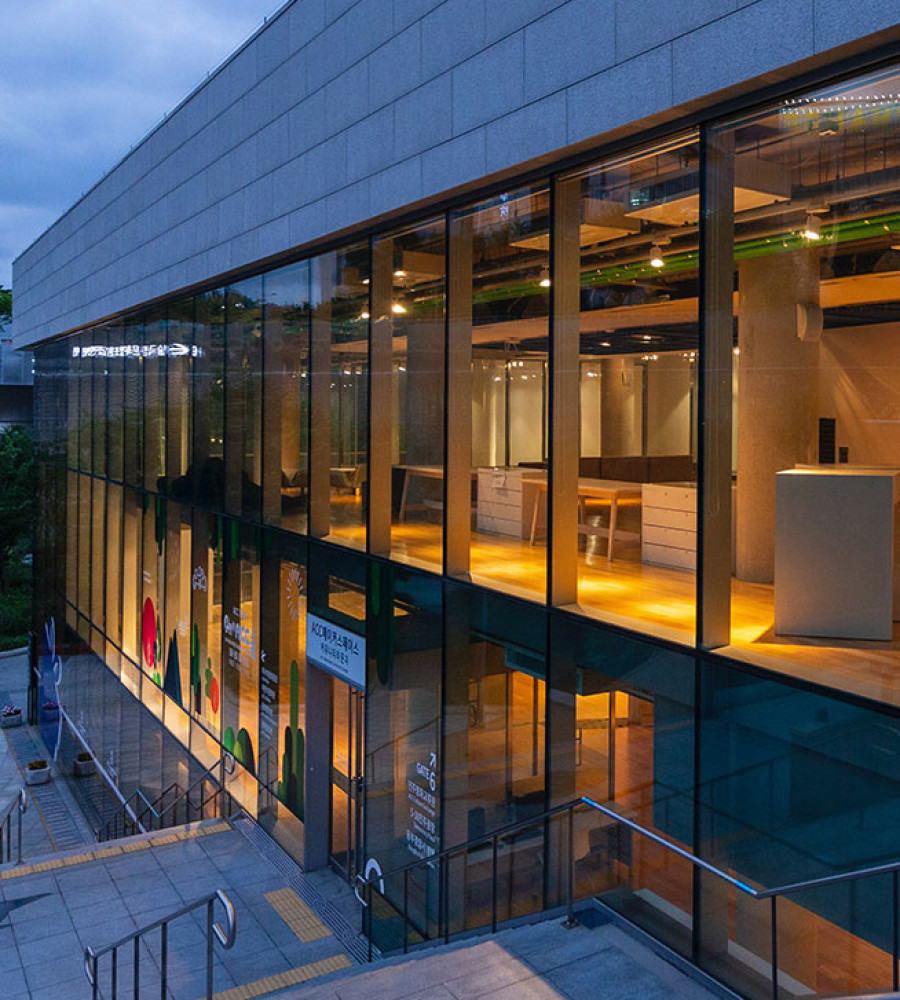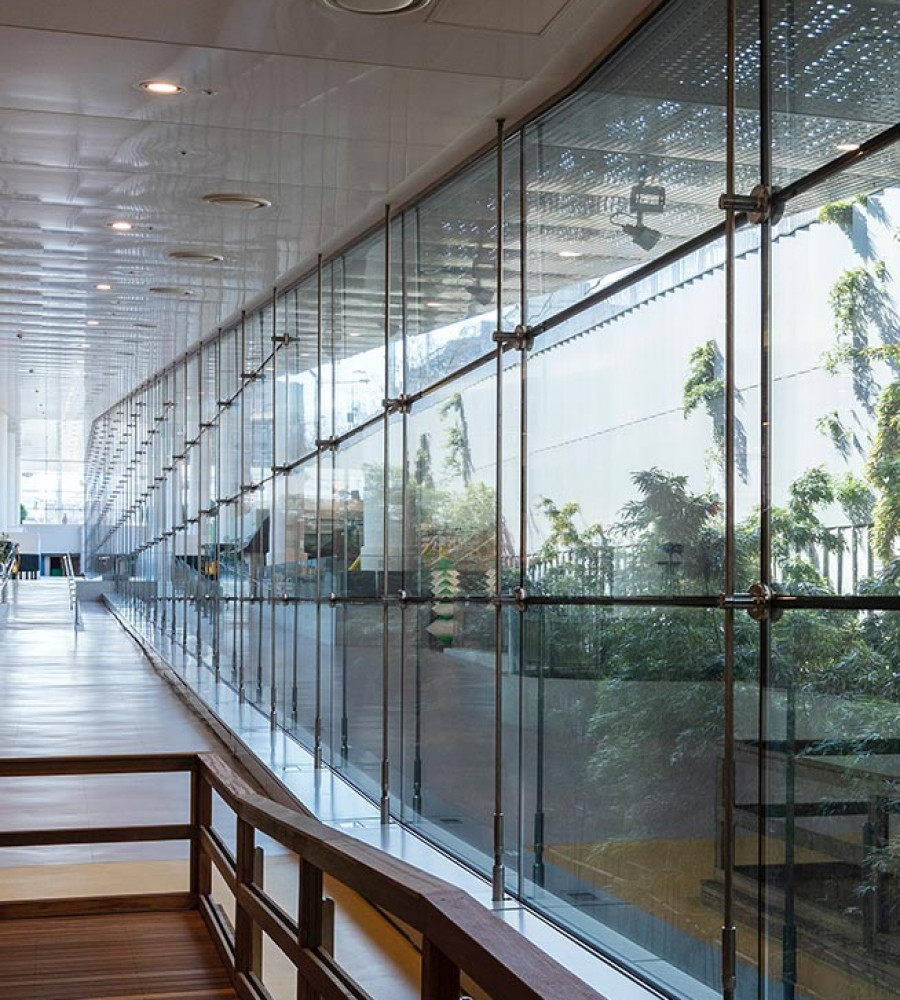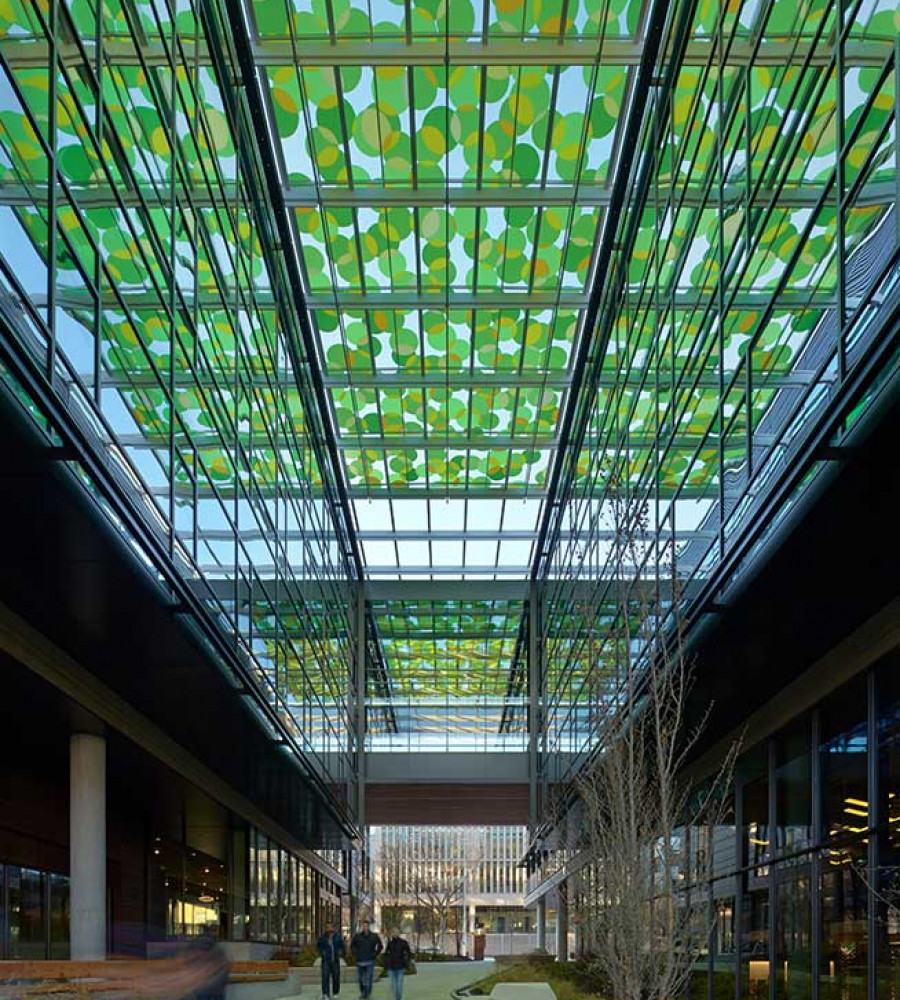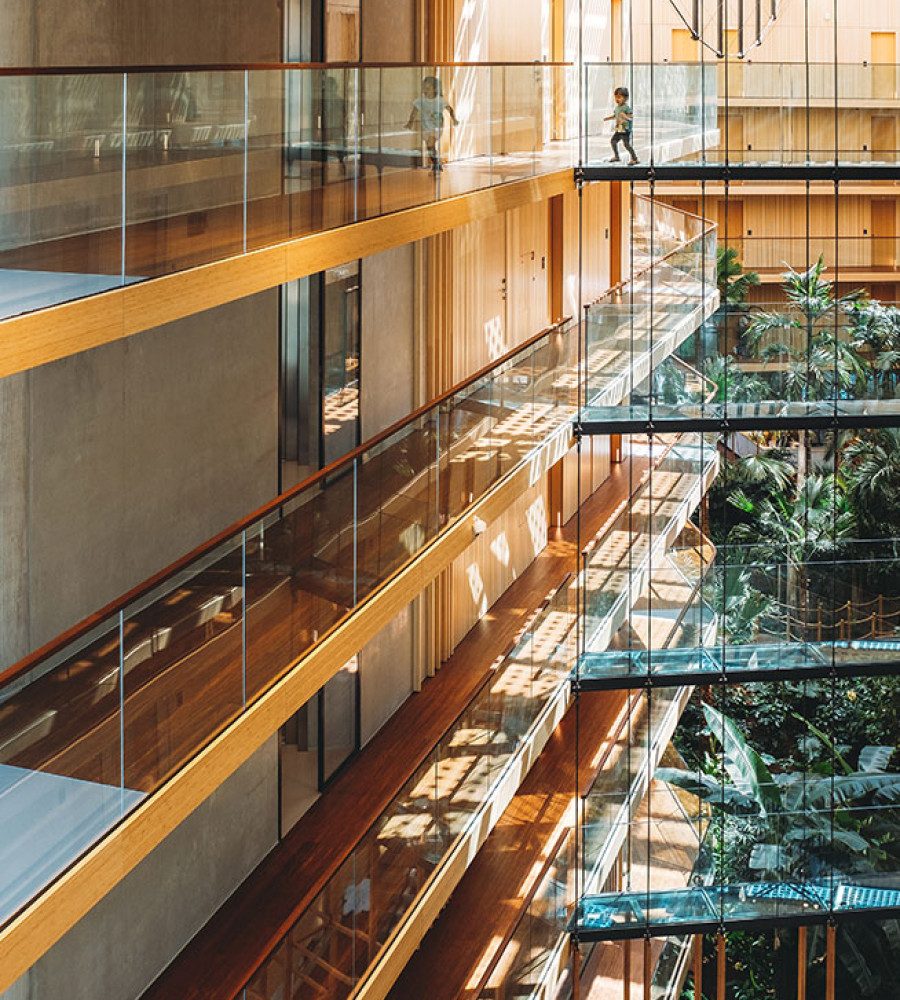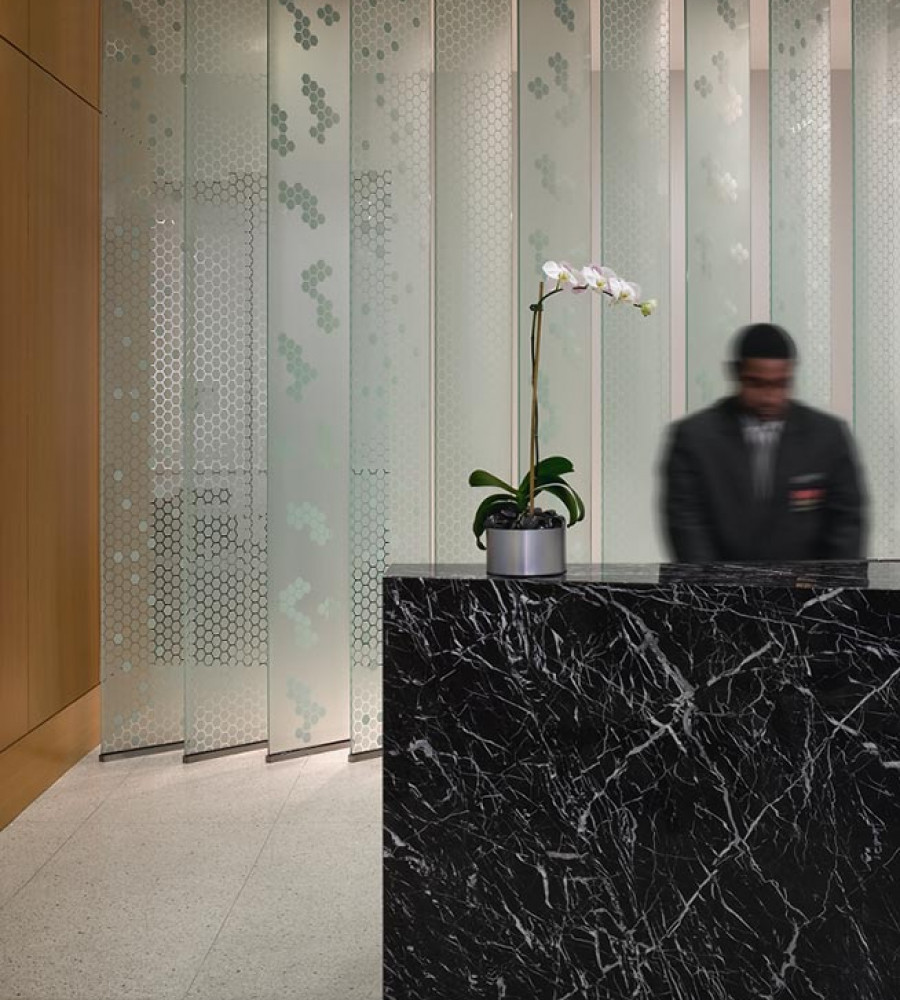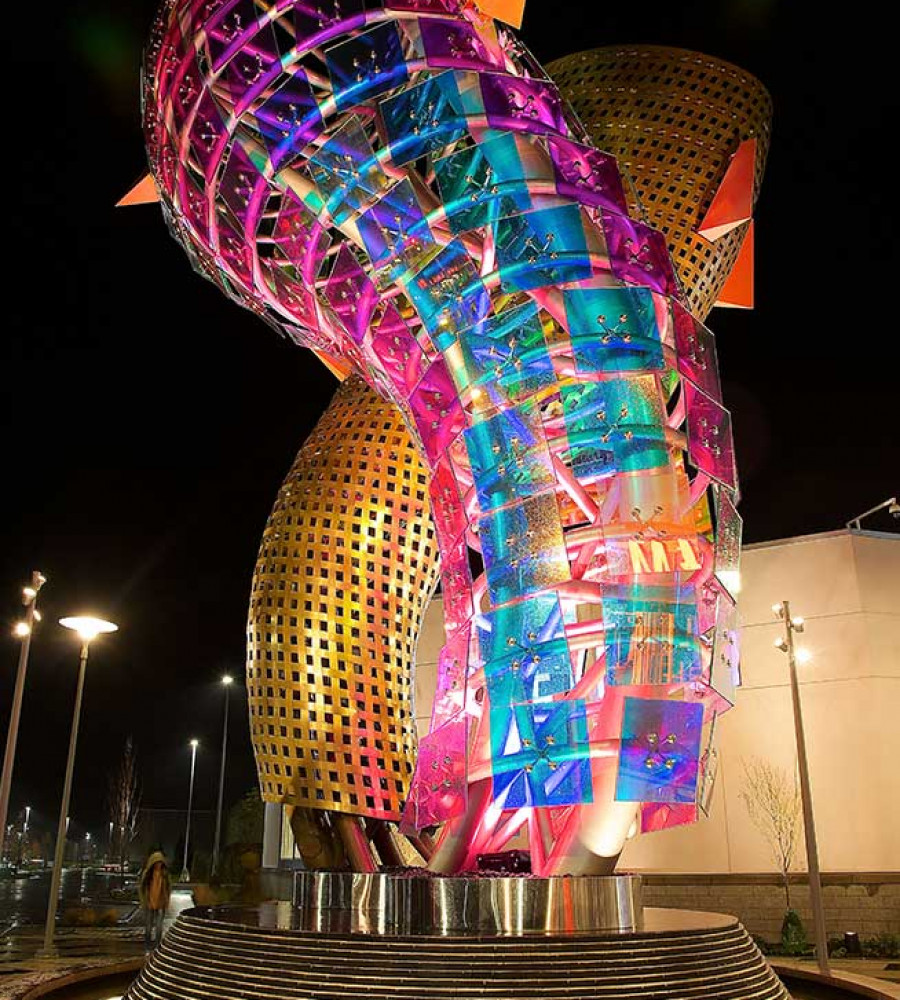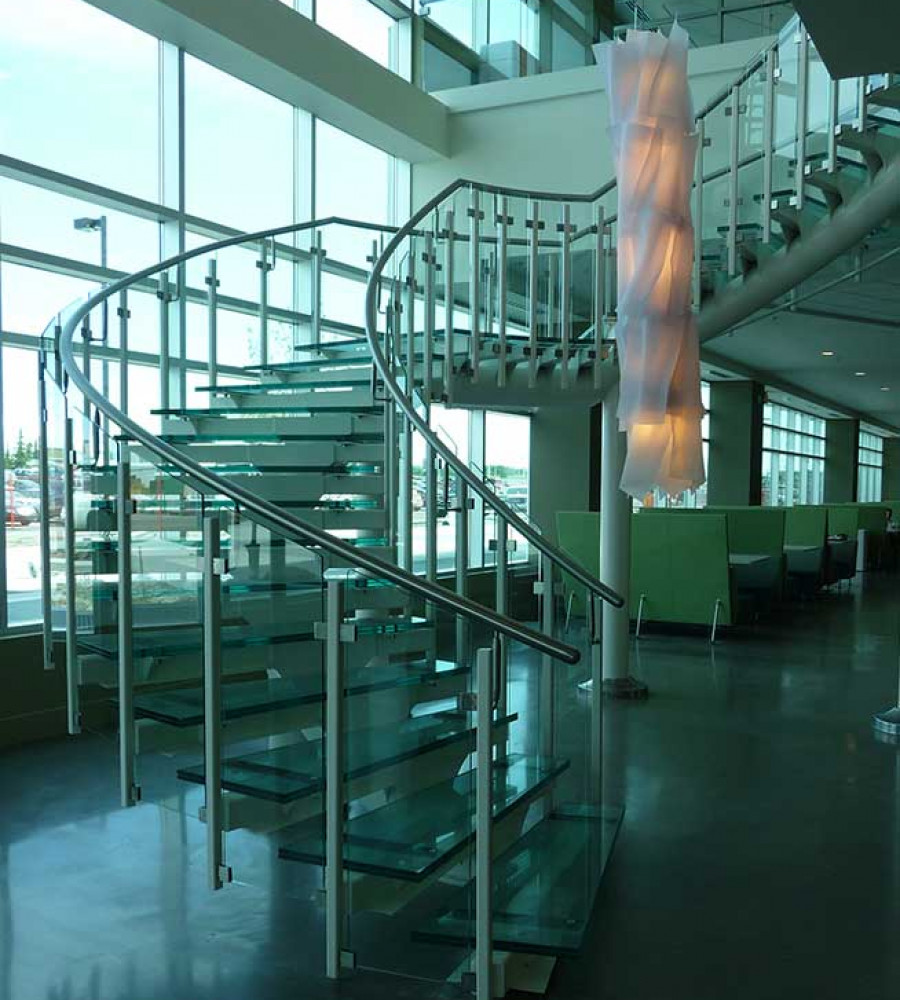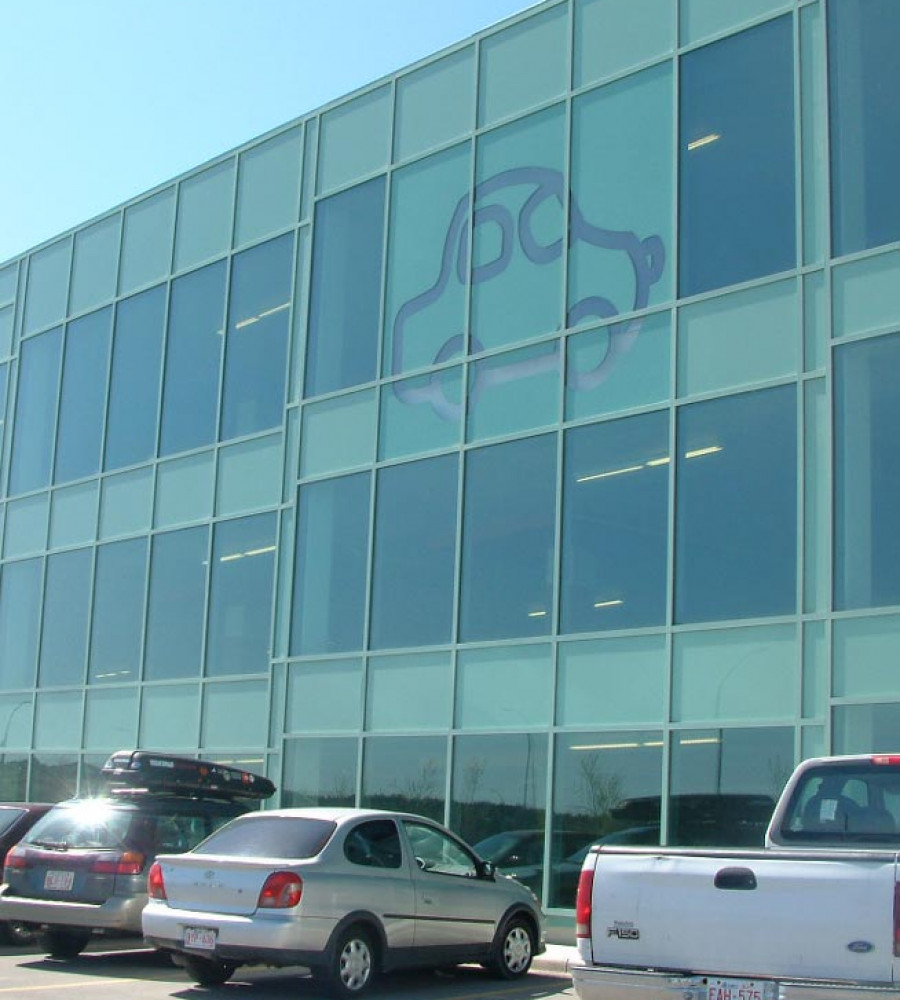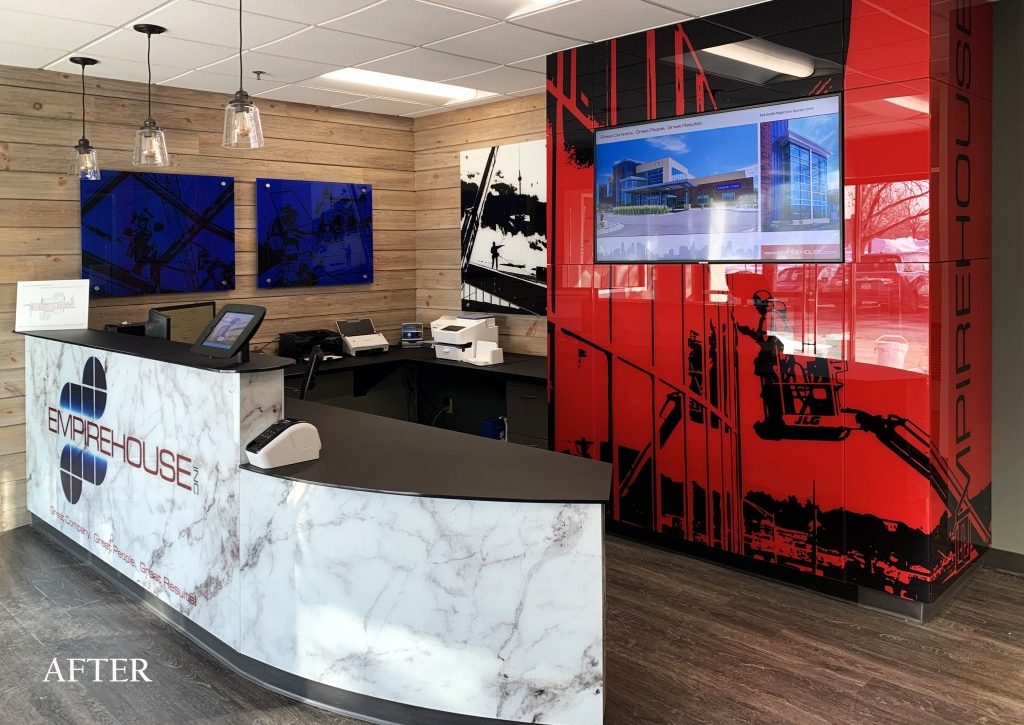Posted: 4 years ago
Glass Manufacturing Sustainability
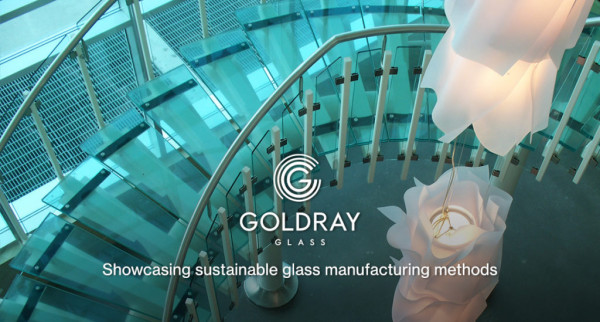
Glass is synonymous with illumination, transparency, spaciousness, and versatility. It can be used to make windows, of course, but also mirrors, tiles, mosaics, space dividers, and even flooring and stairs. Glass clearly has an important role to play in healthy building (no pun intended). There are a lot of factors to consider when specifying glass for a project. How can glass be sustainable? What should designers and other building industry professionals look for in a manufacturer? And where does glass come from?
To learn more, Knowledge Bank spoke with Goldray Glass’s Vice President of Sales and Marketing, Laura Little, and their Industrial Scientist, Prince Ruchogeza. Goldray Glass is a manufacturer of architectural decorative glass for interior and exterior applications. It’s a family-based company that was founded in 1985 in Calgary, Canada, where their HQ still operates today, supported by new generations of families who have worked at the company since the beginning. Goldray Glass is a member of the U.S. Green Building Council, the Canada Green Building Council, and the Health Product Declaration Collaborative, and the company is committed to continually improving the sustainability of its products.
How is Glass Made?
The main ingredient in glass is sand – typically silica-heavy sand. In glass production, soda ash and lime or sodium carbonate and calcium carbonate are used to lower the melting point of silica sand and alter its basic molecular structure. They make the sand softer and easier to work with. The ingredients are heated to 3000 degrees Fahrenheit, hotter than molten lava. Glass is formed as this molten mixture cools quickly.
Sustainable Glass Manufacturing
While there’s no way to make glass for architectural applications without using sand and lots of heat, there are ways to make the process more energy- and resource-efficient. Little explains: “The glass comes to us in big sheets from the float factory where they recycle the excess glass trim from the ribbon and reuses the cullet to add back to the glass manufacturing process. The offcuts from our facility is recycled into materials for other products, like highway marking beads . It’s a process of eternal recycling.” Goldray, she tells us, has a software to maximize yield so that as much of each sheet is used as possible, and everything else gets recycled. “There’s literally been almost zero waste going into landfills.”
It’s simpler to recycle pre-consumer glass than post-consumer glass, especially if it’s been treated. Ruchogeza explains that only untreated glass – glass without mirrors, paint, or laminates – is recyclable, though Goldray and other glass manufacturers are trying to find a way to change that. Goldray’s clear glass, he tells us, is recycled into beads for use in reflective paint on roads and bike lanes.
One of the challenges for glass manufacturers is electricity and gas use. Because glass must be heated to such high temperatures, there are CO2 emissions. This doesn’t mean that manufacturers can’t still make significant improvements in their energy use. Ruchogeza tells us that at Goldray, they’re currently replacing all of their fixtures in their factory to reduced electricity use. “We are also trying to understand how much power we use at every location – our cutting line, our edging line, our tempering processes – to see how we can modify them to decrease the amount of energy we use.”
Certain processes are water intensive, but there are ways to recycle the water used. For example, the machines which create a polished edge on the glass uses water as a lubricant. Little explains that “built into those machines is the cleaning of the water that’s used so we can recycle it and use the same water over and over rather than it becoming waste water.”

Photography Courtesy of Goldray Glass
Reusable Wall Systems
Traditionally, glass wall cladding installations are glued directly to the wall or substrate. So in order to replace or remove a piece of it, Little explains, you’d need to break the glass, chisel it off the wall, throw it away, repair the dry wall or substrate, and then adhere the replacement. Goldray has developed an innovative wall system that allows for reuse: “You just pop the panels off the wall, pop another one in, and then you can reuse it at a different location,” says Little. “For example, we just installed a whole bunch of wall cladding in a significant transportation project, where they are deciding to add a public art component. Because of the interchangeable feature of the system, the project owners and designers are considering incorporating the art into the wall by replacing with new panels and reusing the ones taken out in another location..” Thanks to these kinds of systems, renovation and demolition can easily allow for the recovery of glass wall cladding.
Health and Toxins
Glass has some innate benefits when it comes to material health. It’s nonporous, which makes it easy to clean, disinfect, and maintain. Toxicity in glass is often tied to paints and other coatings applied to it rather than the material itself, which doesn’t leach or degrade, as plastic does. That’s why Goldray has eliminated leaded pigments in coatings and is changing their paint to reduce VOC emissions. “We always try to understand what’s in our products so that if there’s anything on the Red List or that’s emitting VOCs, we try to find a substitute. We’re being mindful of our workers, our customers, and the indoor environment where they’ll be installed,” Ruchogeza tells us. Goldray is a member of the Health Product Declaration Collaborative (HPDC), a transparency initiative that provides information about a material’s potential health effects and hazards. (You can find their HPDs on the HPDC website.) According to Ruchogeza, “We always aim for a gold certification for VOC emission. And that might mean taking some of our products out of production if they don’t meet that standard.” Goldray is also working with Material Bank partner mindful MATERIALS, a material library that promotes product transparency and sustainability.
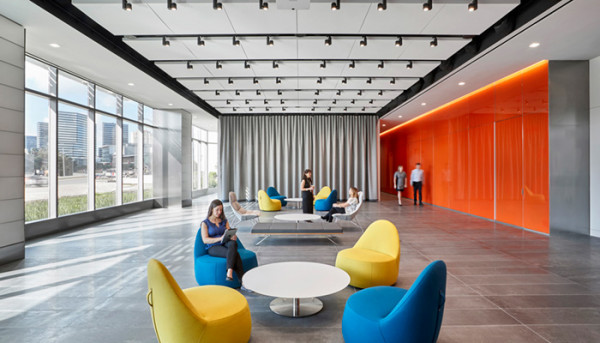
Photography Courtesy of Goldray Glass
The Bird Factor
According to Audobon Portland, every year upwards of a billion birds are killed when they fly into glass building exteriors. And that’s just in North America. Birds can’t perceive windows as solid barriers – instead they see the reflection as open space and fly directly into it. 54 to 76 percent of these collisions are fatal. Ruchogeza explains to us that by putting a pattern on exterior glass, or adding color or images, you can reduce those numbers significantly. (Goldray has a line of bird friendly glass for exteriors.)
Healthy Buildings
It’s important for designers and manufacturers to think about how users will experience a space. Goldray knows that glass is a crucial part of that experience – by letting natural light in (a principle of biophilic design), glass contributes to people’s wellbeing. “We take the WELL certification very seriously,” says Little. “It’s all about people enjoying spaces and feeling uplifted by the materials used to create their physical environment. We know that human beings need as much natural daylight as possible to contribute to their positive mental health at work. It can also reduce the need for electrical light through daylighting strategies. And you can also use coatings on glass to keep the solar heat gain out of a building – by reflecting some of the heat out but letting the light come in, you’re brightening the space but reducing the load on the cooling system.”
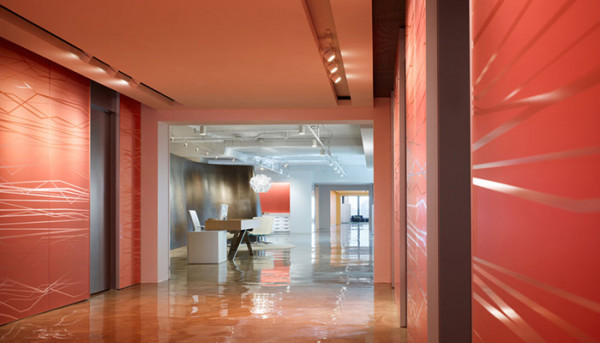
Photography Courtesy of Goldray Glass
Pushing the Industry
In the end, Little says, “everybody wants to make more environmentally friendly choices. But it’s about having a company that actively challenges the status quo and prioritizes innovation because it’s work to come up with new processes for things that are low VOC or no VOC. It’s work to push the industry to reuse building materials rather than just letting things carry on. Construction has more raw materials that end up in the landfill than any other industry. So it’s a big opportunity to improve, but sometimes it takes challenging the way things are done and going through the hard work of pushing things forward.”
“It takes a manufacturer who takes that work upon themselves,” she continues. “A manufacturer that thinks about the behavior of the suppliers as well as the customers, considers what it is that we’re using these materials for, and empowers customers to be more environmentally conscious when they’re choosing products. This is not the standard in the construction industry, but the more opportunities that we find to grow as an industry, the brighter future we create together.”
Featured Article
Original article in Material Bank's Knowledge Bank here.

